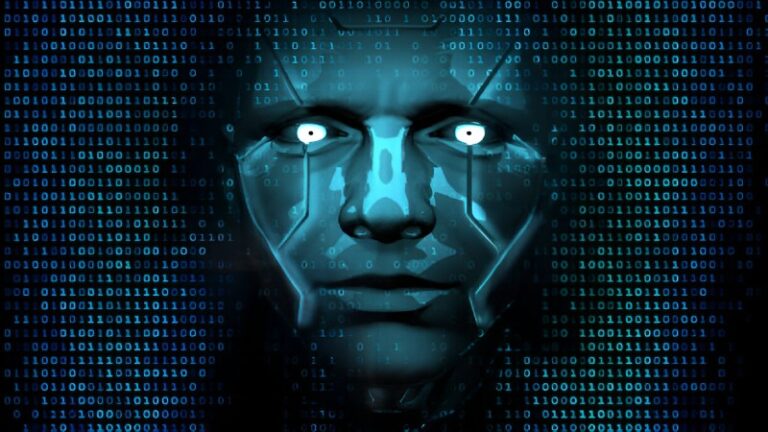Innovation is often heralded as the ultimate engine of progress, bringing forth remarkable advancements that simplify our lives and propel society forward. From the revolutionary impact of mobile phones to life-saving medical breakthroughs, the good side of innovation is undeniable. However, an important question often lingers beneath the surface of technological marvel: What happens when gadgets go wrong? This isn’t just about a faulty product; it delves ianto the inherent potential for harm, misuse, and unforeseen negative consequences that even the most well-intentioned inventions can unleash.
The Unintended Consequences of Progress
While innovation aims for positive change, every new tool, method, or technology carries a shadow side. This isn’t necessarily malevolent; sometimes, it’s simply the disruption of an established order.
The Good and The Bad of Disruption
- The Good: Innovation drives economic growth, improves quality of life, and provides new solutions to old problems. Think of how smartphones have revolutionized communication, commerce, and access to information, fundamentally improving lives globally.
- The Bad: Change, even positive change, can be uncomfortable. It forces us out of comfort zones and disrupts existing economic, political, and social equilibriums. This destruction of the old order is often met with resistance from those who benefit from the status quo, creating a natural tension in the face of progress.
The True Dark Side
The dark side of innovation emerges when technologies, designed for good, are misused or have inherent design flaws that lead to harm. This isn’t a new phenomenon; it has existed throughout history:
- A knife, essential for preparing food, can be used as a weapon.
- A life-saving medical drug can be poisonous in overdose.
- Electricity, powering our world, can also electrocute.
The ethical dilemma isn’t whether to stop innovation, because what is thought cannot be unthought. An idea, once conceived, will likely be developed by someone, somewhere. The challenge lies in how we, as users and a society, hedge against these inherent dangers.
Navigating the Perils
Beyond intentional misuse, modern gadgets, particularly smart devices and connected technologies, present a new frontier of unintended consequences and vulnerabilities.
Privacy Invasion
Many contemporary gadgets, especially those in the Internet of Things (IoT), collect vast amounts of personal data. While intended to enhance user experience, this data can be a goldmine for malicious actors or misused by companies themselves.
- Smart Home Devices: From smart speakers to security cameras, these devices can inadvertently record conversations, track movements, and expose your daily routines.
- Wearables: Fitness trackers and smartwatches collect sensitive health data, raising questions about who owns this information and how it’s protected.
- Data Breaches: Even with robust security measures, data breaches are a persistent threat. When personal data associated with your gadgets is exposed, it can lead to identity theft or targeted cyberattacks.
Cybersecurity Risks
Every connected gadget is a potential entry point for cyber threats. The proliferation of smart devices creates a sprawling network of vulnerabilities.
- Weak Passwords & Default Settings: Many devices come with easily guessable default passwords or allow weak custom passwords, making them easy targets.
- Outdated Firmware: Lack of regular software and firmware updates leaves devices susceptible to known exploits.
- Botnets & DDoS Attacks: Compromised IoT devices can be hijacked and used to launch large-scale cyberattacks, disrupting services worldwide.
- Malware & Spyware: Gadgets can be infected with malware, allowing hackers to snoop on your activities, steal data, or even take control of the device.
| Cybersecurity Threat | Description | Potential Impact on User |
| Phishing/Social Engineering | Tricking users into revealing sensitive information through deceptive communication. | Account compromise, identity theft |
| Device Hijacking | Gaining unauthorized control of a smart device. | Surveillance, home invasion (smart locks), data theft |
| Data Interception | Capturing unencrypted data transmitted between devices. | Privacy breach, exposure of sensitive information |
| Denial of Service (DoS) | Overloading a device or network to make it unavailable. | Device malfunction, service disruption |
Societal and Personal Impact
The dark side isn’t limited to immediate technical failures or privacy breaches. Innovation can have broader, more subtle consequences that affect our well-being and the fabric of society.
The Challenge of Digital Well-being
While gadgets connect us, they can also lead to issues of digital addiction, information overload, and reduced face-to-face interaction. The constant alerts, notifications, and endless scrolling opportunities can detract from real-world engagement and mental health.
- Screen Time Overload: Excessive use of devices can impact sleep, concentration, and physical activity.
- Information Fatigue: The constant deluge of news and social media can lead to anxiety and burnout.
- Social Isolation: Despite connectivity, over-reliance on digital interactions can sometimes diminish genuine human connection.
Ethical Quandaries of Emerging Tech
Cutting-edge innovations like advanced AI, deepfakes, and genetic engineering bring complex ethical dilemmas that society is still grappling with.
- Algorithmic Bias: AI systems can perpetuate or even amplify existing societal biases if fed skewed data.
- Misinformation and Deepfakes: The ease of creating realistic but fake content poses significant risks to truth, trust, and even democratic processes.
- Job Displacement: Automation, while efficient, can lead to job losses in certain sectors, creating economic inequality.
Hedging Against the Dark Side
Since stopping innovation isn’t feasible, the most effective approach is to empower users with knowledge and tools to mitigate the risks when gadgets go wrong.
Proactive Personal Cybersecurity
You have a significant role in protecting yourself from the dark side of innovation:
- Strong, Unique Passwords: Use complex, distinct passwords for every account and device. Consider a password manager.
- Two-Factor Authentication (2FA): Enable 2FA wherever possible for an extra layer of security.
- Regular Software Updates: Keep all your devices and applications updated. These updates often contain critical security patches.
- Privacy Settings Audit: Regularly review and adjust privacy settings on devices, apps, and social media to control data sharing.
- Secure Wi-Fi: Be cautious with public Wi-Fi. Use a Virtual Private Network (VPN) for sensitive activities.
- Network Segmentation: For smart homes, consider creating a separate guest network for IoT devices to isolate them from your main network.
Cultivating Digital Resilience
Beyond security, adopt habits that foster a healthier relationship with technology:
- Set Boundaries: Establish tech-free zones (e.g., bedrooms, dining tables) and specific times for digital detox.
- Mindful Consumption: Be intentional about how you consume content, avoiding aimless scrolling.
- Utilize Digital Well-being Tools: Use built-in features on your devices (like Screen Time or Digital Wellbeing) to monitor and manage usage.
- Prioritize Offline Activities: Engage in hobbies, social interactions, and physical activities that don’t involve screens.
Advocating for Responsible Innovation
As consumers, our collective voice can influence how companies develop and deploy new technologies:
- Demand Transparency: Push for clear explanations on data collection, usage, and security practices.
- Support Ethical Design: Choose products from companies that prioritize security and user privacy by design.
- Be Informed: Stay updated on potential risks associated with new technologies.
Conclusion
While innovators continue to push boundaries, creating incredible tools that reshape our world, it is equally vital for users to understand the inherent risks. By adopting proactive security measures, cultivating digital well-being, and demanding ethical practices from manufacturers, we can collectively steer innovation towards a future where its benefits overwhelmingly outweigh its potential for harm. After all, what is thought cannot be unthought, but how we choose to interact with those thoughts, and their physical manifestations, is entirely within our control.
Frequently Asked Questions (FAQs)
What is the dark side of innovation?
The dark side of innovation refers to the inherent potential for harm, misuse, or unforeseen negative consequences that even well-intentioned technologies can have, extending beyond simple product failures.
How can smart home devices pose a privacy risk?
Smart home devices can pose privacy risks by collecting vast amounts of personal data, inadvertently recording conversations, tracking movements, and potentially exposing daily routines or your home network if not properly secured.
What is the Urban Heat Island (UHI) effect, and how do green spaces help?
The Urban Heat Island (UHI) effect describes how cities are significantly hotter than surrounding rural areas due to heat absorption by concrete. Green spaces help by providing shade and cooling the air through evapotranspiration, reducing temperatures.
Are cybersecurity risks common with modern gadgets?
Yes, cybersecurity risks are common with modern gadgets, especially connected IoT devices, due to vulnerabilities like weak passwords, outdated software, and potential for device hijacking or data interception.
How can users protect themselves from the negative impacts of technology?
Users can protect themselves by using strong passwords, enabling two-factor authentication, regularly updating software, reviewing privacy settings, being cautious with public Wi-Fi, and cultivating healthy digital habits.
What are some examples of unintended societal consequences of innovation?
Unintended societal consequences include issues like digital addiction, information overload, algorithmic bias in AI systems, the spread of misinformation via deepfakes, and job displacement due to automation.
Why is it difficult to stop the development of potentially harmful innovations?
It’s difficult to stop the development of potentially harmful innovations because what is thought cannot be unthought; if one inventor doesn’t pursue an idea, another likely will, making universal prevention nearly impossible.


